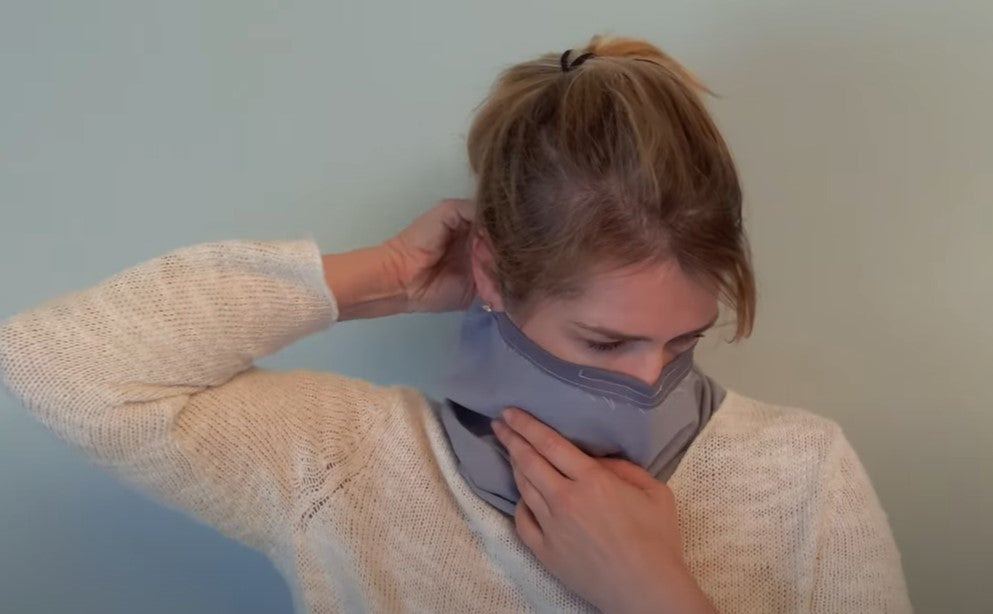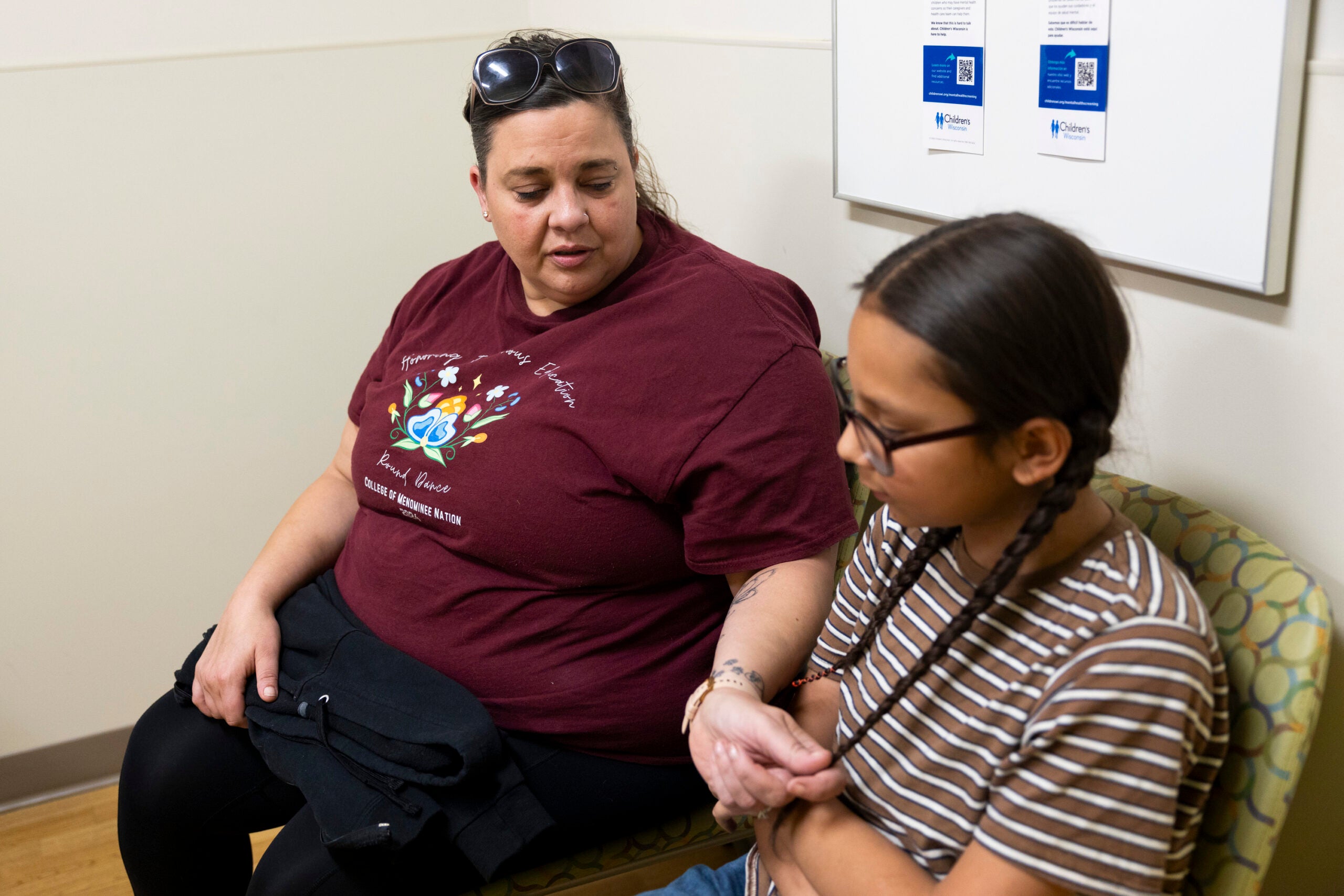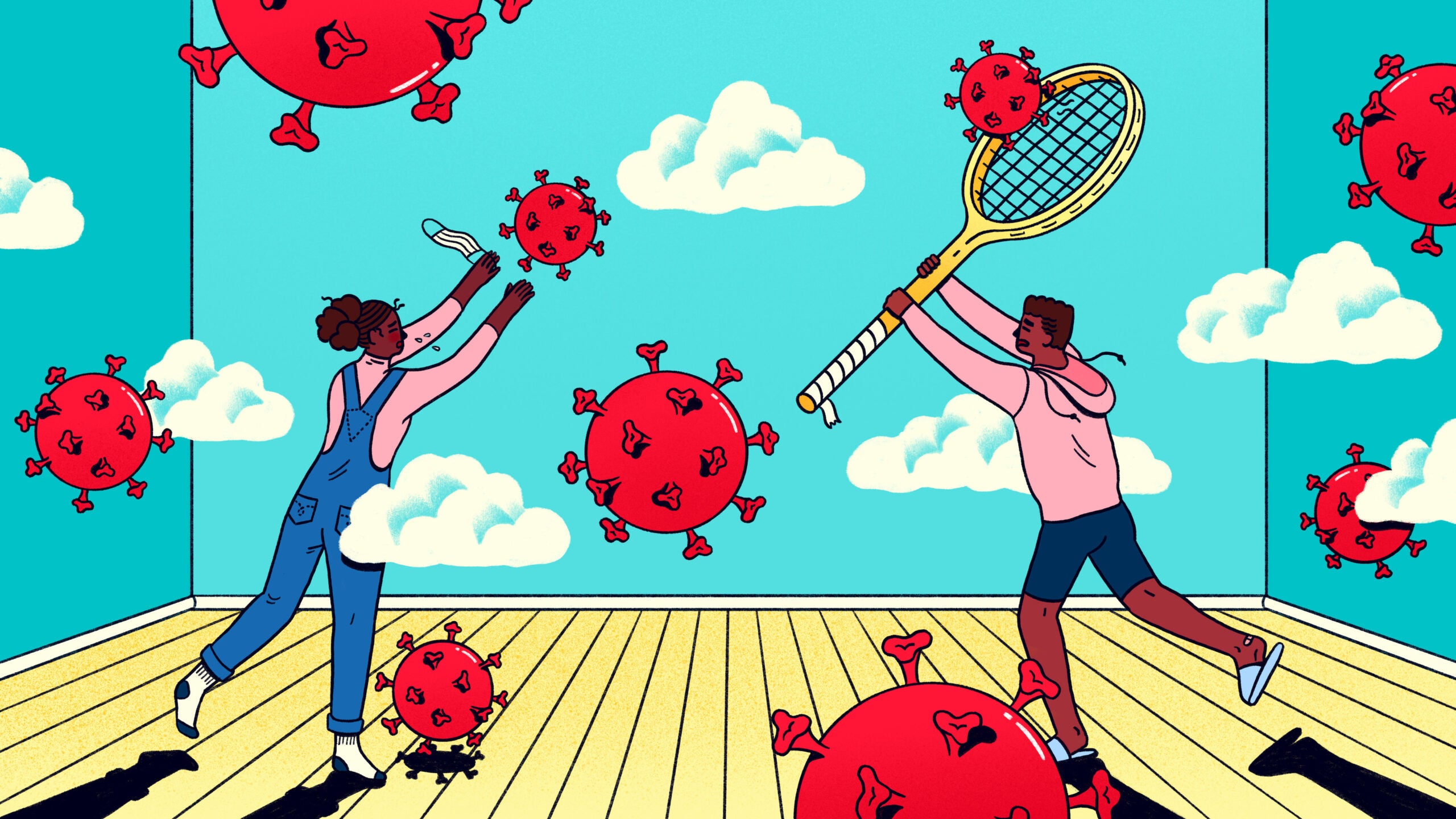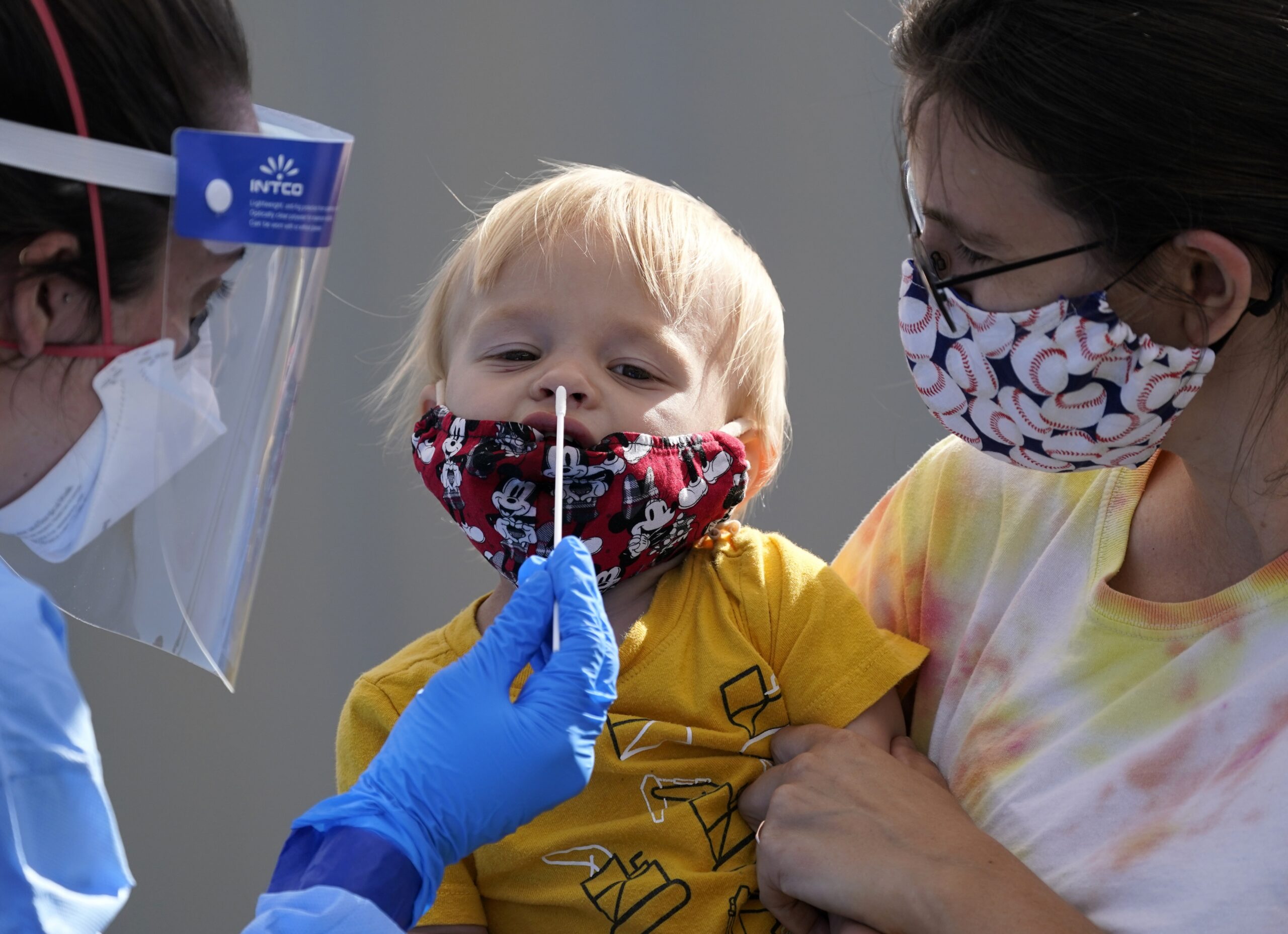For a mask to be effective against COVID-19, it needs to be made from material that captures respiratory droplets and it has to fit well enough around the nose and mouth so that the droplets can’t escape.
And not all material is created equal.
Research by Scott Sanders, a professor in the mechanical engineering and electrical and computer engineering departments at the University of Wisconsin-Madison, has shown that in situations where people can social distance, three-layered masks are best, with cotton for the internal layer, a non-woven synthetic for the middle and an outer layer of polyester.
Stay informed on the latest news
Sign up for WPR’s email newsletter.
Sanders and his team have been studying both the breathability of certain materials and their effectiveness in preventing particles from escaping. Though they traditionally use optics and lasers to study gases, they’re now using those optical techniques to study the effectiveness of masks.
“Certain materials will do a great job of filtering, but they’re really hard to breathe through, and so they don’t work,” he said. “And then other materials are easy to break through, but they also let a lot of the particles through, so they don’t work very well either. So you have to be in some kind of sweet spot where the material lets you breathe through it, but also captures a lot of the particles.”
COVID-19 is a disease caused by a lower respiratory virus that gets into a person’s lungs. When people sneeze, cough, scream, sing or talk, they release respiratory droplets into the surrounding air. That contaminates the air and can sicken others who breathe them in.
Sanders and his team tested out the efficacy of different types of masks by putting masks on a mannequin and simulating coughs with extra fog built in to show where and how the particles escape the covering.
The neck gaiter mask proved most successful, though Sanders said it may be overkill for most situations because it can be bulky.
“I think it may be best suited to instances where people want to be extra careful, say when they are going to a higher risk public space where they can’t distance, or when they are coughing or sneezing a lot,” he said.
According to the World Health Organization, fabric cloths like nylon blends and polyester are two to five times more efficient at filtering when they’re double layered, compared to a single layer. Cotton handkerchief masks should be folded into four layers, and even then only show a 13 percent filtration efficiency.
The three-layered masks are best because of the different functions of each of the layers. Cotton absorbs the water droplets you breathe out. The non-woven synthetic material is the best at filtering and the polyester on the outer layer will help keep things from getting into the mask.
The way the mask fits on your face also has to be considered. Glasses wearers have a bit of a leg up on this. When their glasses fog up, that’s a sign that the fit isn’t right.
There’s air leaking out of the top of the mask, Sanders said.
He advises people to make sure the mask has a nose piece that’s rigid and will hold its shape well. If you’re using cloth masks, keep trying different ones until you find one that fits well. Face shields might be better for people who use glasses, but they’re not as effective as masks because they’re open and exposed to air at the bottom.
But even if there is leaking from the mask, some kind of barrier is better than nothing, said Ajay Sethi, an associate professor of population health sciences at UW-Madison.
And, the masks should really be combined with social distancing, added Sethi, who is part of a team developing a model to forecast potential surges in hospitalizations in southern Wisconsin.
“It’s not a substitute for physical distancing,” he said. “They really have to go hand in hand.”
Wisconsin Public Radio, © Copyright 2024, Board of Regents of the University of Wisconsin System and Wisconsin Educational Communications Board.







